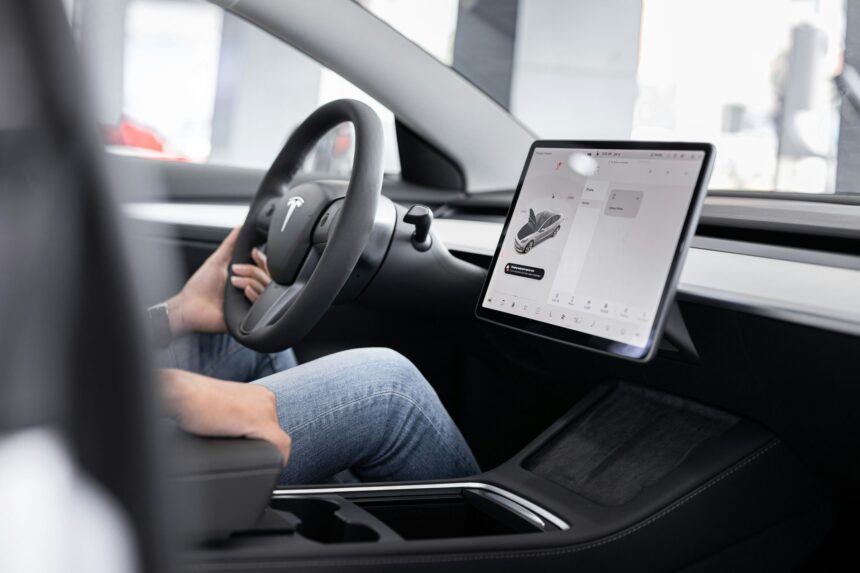In 2025, technology is set to dramatically enhance road safety through groundbreaking innovations. From autonomous vehicles to advanced traffic management systems, these developments aim to reduce accidents and protect both drivers and pedestrians.
This article will explore the key technologies transforming road safety and highlight their potential to create safer travel experiences. Join us as we examine the innovations that are changing the way we think about road safety.
The Global Need for Enhanced Road Safety
Road safety continues to be a critical global issue. As urban dwellers grow and automobile ownership increases, roadways become more congested, raising the likelihood of accidents. Nobody is denying that infrastructure improvements have reduced some hazards. However, human behaviors, such as distracted driving, fatigue, and speeding, remain the leading causes of preventable crashes.
The National Safety Council (NSC) reveals that an estimated 44,680 lives were lost in avoidable traffic accidents in the United States in 2024. An expert stressed the urgency of the matter. They stated that critical work was needed to improve roadway safety.
The expert warned that without major changes, risks would continue for millions of daily road users. They added that recent incidents showed just how urgent the issue had become.
Let us consider a real example to understand the gravity of the situation. According to KOAA News5, a serious car accident occurred in Colorado Springs in April 2025.
Four people were taken to the hospital, including three students who suffered serious injuries. Another individual, who was not a student, was also reported to be in critical condition. Consulting an auto accident attorney in Colorado Springs can provide crucial support in complicated cases like this.
As Springs Law Group notes, victims often face a complex recovery process, physically, emotionally, and financially, in such complex situations. The attorneys help victims gather evidence, communicate with insurers, and pursue fair compensation. They also help with the most just insurance claims.
Given the severity of the situation, the focus on road safety is evolving from reactive responses to proactive prevention. Traditional methods such as road signs, traffic signals, and speed bumps, while important, are no longer sufficient on their own.
As mobility patterns evolve, our approach to safety must evolve as well. Fortunately, 2025 has brought with it a surge in innovative technologies designed to prevent accidents before they happen.
The Role of Tech in Reducing Road Accidents in 2025
Here are some key ways tech innovations are making a difference:
AI and Machine Learning in Road Safety
Artificial intelligence (AI) and machine learning (ML) have become essential components for enhancing road safety in 2025. Predictive analytics is among the most exciting applications of AI and ML.
Rather than simply responding to accidents after they occur, predictive analytics enables systems to foresee high-risk situations. It also allows for the implementation of preventive measures in real-time.
So, how does it work? These systems analyze vast datasets gathered from traffic cameras, sensors, weather forecasts, and even social media.
By recognizing patterns and anomalies, AI can forecast where and when accidents are likely to occur. Minnesota’s recent push to integrate these cutting-edge technologies for safer roads is a powerful example of innovation in action. Minnesota is taking significant strides in road safety by launching an innovative initiative that leverages AI to prevent accidents.
The program involves local police departments collaborating with the Minnesota Department of Public Safety and the Minnesota State Patrol. Roads & Bridges says that the program uses historical crash data combined with real-time AI analytics to identify high-risk areas.
Vehicle-to-Everything (V2X) Communication
In 2025, V2X communication is expected to revolutionize traffic safety. This state-of-the-art technology allows cars to communicate with other cars, buildings, pedestrians, and cloud-based traffic systems. By exchanging information in real-time, V2X facilitates proactive safety measures that extend beyond the driver’s immediate view.
The global V2X market was valued at USD 19.94 billion in 2024. Grand View Research projects it to grow at a compound annual growth rate of 42.2% from 2025 to 2030. This growth is driven by increased government support for road infrastructure improvements and the rising adoption of vehicles equipped with V2X technology.
V2X employs various wireless communication protocols, including Dedicated Short-Range Communication (DSRC) and 5G, to achieve rapid data exchange. Thanks to this technology, vehicles can obtain vital information about possible dangers, traffic jams, and road conditions. These updates often arrive even before the dangers become visible to drivers. Essentially, it equips vehicles with a “sixth sense.”
Advanced Driver Assistance System (ADAS)
ADAS has become more essential than ever for road safety. It is designed to increase driver awareness and lower the likelihood of collisions. In 2025, ADAS will shift from a premium feature to a standard inclusion in most new vehicles. This change has been driven by regulatory measures and increasing consumer demand.
In 2024, the global ADAS market was worth $34.93 billion. Verified Market Research says that it is expected to grow to $73.74 billion by 2031. This is with a compound annual growth rate (CAGR) of 10.80% between 2024 and 2031.
The rising number of traffic accidents worldwide has accelerated the adoption of ADAS technologies aimed at enhancing vehicle safety. ADAS offers a wide range of functionalities, from simple alert systems to advanced semi-autonomous capabilities.
Key examples include features like automated emergency braking, lane-keeping assistance, adaptive cruise control, and automatic parking. ADAS relies on a combination of cameras, sensors, and radar to monitor the driving environment.
In 2025, ADAS technology has become more interconnected and sophisticated. It now operates collaboratively in real-time, forming an integrated safety network around the driver. This seamless interaction between warning mechanisms and corrective actions leads to faster response times and fewer false alarms.
FAQs
How do road safety technologies support people with disabilities in 2025?
Advanced technologies like voice-assisted navigation and autonomous taxis with wheelchair access have significantly improved mobility for people with disabilities. Smart infrastructure now interacts with assistive devices. This makes it safer for individuals with visual or hearing impairments to navigate streets and crosswalks independently.
What role does 5G play in enhancing road safety?
5G enables ultra-fast, low-latency communication between vehicles, infrastructure, and cloud platforms, forming the backbone of intelligent transportation systems. This real-time connectivity is crucial for autonomous driving, allowing vehicles to make split-second decisions based on live data. It also enhances hazard detection, route optimization, and dynamic traffic flow management.
How does climate change affect the advancement of road safety technologies?
As extreme weather events become more common, road safety technologies are evolving to address risks like heavy fog, black ice, and flash floods. AI-driven systems now incorporate environmental data to adapt vehicle behavior. Safety features are also being engineered to perform reliably across a broader range of weather conditions.
The innovations shaping road safety in 2025 represent a vital shift towards a more proactive and interconnected approach to preventing accidents. As technologies like the ones discussed above become standard, they create a comprehensive safety net that enhances driver awareness.
Tech innovations also foster collaboration between vehicles and infrastructure. This evolution signals a future where roadways are not just pathways for travel but smart systems designed to protect lives.




